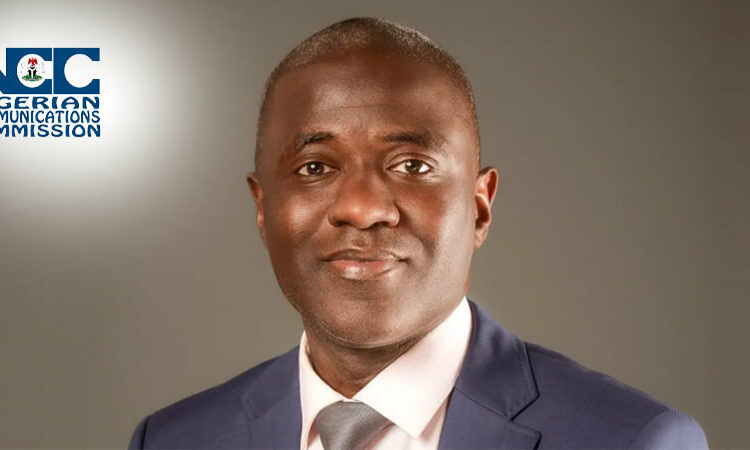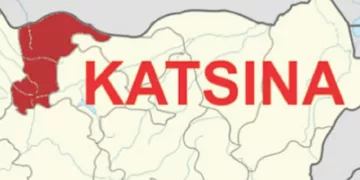The telecommunications industry in Nigeria has always been a key driver of economic growth, bridging digital divides and fostering connectivity across the nation. In 2024, the sector experienced both remarkable advancements and formidable challenges, reflecting a complex interplay of government initiatives, private sector innovation, economic constraints, and structural barriers.
To start with, the sector experienced a decline in subscriber base due to the National Identity Number (NIN) verification mandates. While the federal government and industry stakeholders pushed forward ambitious plans to expand broadband penetration and address critical gaps, the year also revealed persistent issues, including high device costs, digital exclusion, and an increasingly volatile economic environment.
Subscriber Base Declines Amid Nin Verification Mandates
The federal government’s mandate to link SIM cards to National Identification Numbers (NINs) caused a massive shake-up in subscriber numbers in the year under review. As of September 2024, mobile operators MTN, Airtel, Globacom, and 9mobile collectively disconnected 64.3 million lines due to unverified NINs. This led to a 30 per cent drop in the nation’s mobile subscriber base, from 219 million in March to 154.6 million
For instance, an operator lost 43 million subscribers, while another subscribers’ base was reduced to a mere 3.6 million active lines. Still, others that were less affected, reported notable reductions, potentially impacting their Q3 revenue.
While the exercise ensures greater national security, as emphasised by the Nigerian Communications Commission (NCC) vice chairman Dr. Aminu Maida, the financial and operational toll on the sector remains substantial.
Broadband Penetration: A Mixed Report Card
One of the most critical metrics for the Nigerian telecoms industry in 2024 was broadband penetration. The country started the year with a goal to achieve 70 per cent penetration by the end of 2025, as outlined in the National Broadband Plan (NBP 2020–2025). However, penetration fell short, standing at 43.71 per cent as of March 2024, with further declines reducing it to 41.56 per cent by September.
This decrease reflects the challenges in extending high-speed internet access across a vast and diverse country. The high cost of smartphones emerged as a key barrier. Prices for 4G and 5G-enabled devices, ranging between N120,000 and N2 million, remained out of reach for most Nigerians, especially the 88.4 million citizens living in extreme poverty. Reports by DataReportal estimate that only 11.8 per cent to 18.9 per cent of Nigerians own smartphones, underscoring a critical gap between demand and affordability.
Operators highlighted affordability as the “biggest barrier” to smartphone adoption and broadband expansion and advocated for local assembly of devices to reduce costs and eliminate customs taxes, coupled with financing options.
To bridge the connectivity gap, the Ministry of Communications, Innovation, and Digital Economy launched several initiatives, including Project 774 LG Connectivity, designed to link all 774 local government areas to the internet. The government also introduced a Special Purpose Vehicle (SPV) to extend Nigeria’s fibre-optic network by 90,000 kilometers, expanding the backbone from 35,000 to 125,000 kilometers. These efforts aim to build a more connected future, but the pace of execution will be critical in determining success.
The Growing Divide: Digital Exclusion And Infrastructure Gaps
Despite progress in mobile internet usage, digital exclusion remains a significant challenge. GSMA’s State of Mobile Internet Connectivity 2024 report revealed that 120 million Nigerians remain disconnected from the digital world. While mobile internet is technically available to 83 per cent of the population, only 29 per cent—approximately 58 million people—actively use it.
The divide is stark between rural and urban areas, with smartphone penetration at 26 per cent in rural regions compared to 59 per cent in urban centers. Moreover, affordability of internet-enabled devices remains a major issue, with entry-level smartphones costing 99 percent of the average monthly income for the poorest 20 percent of Nigerians.
Coverage gaps exacerbate the situation. The NCC estimates that 27 million Nigerians live in areas without telecom services, and 301 local government areas lack internet connectivity entirely. Sub-Saharan Africa has the highest global coverage gap, with 13 per cent of its population lacking access to mobile internet infrastructure.
Addressing these issues requires more than just infrastructure investments. GSMA emphasised the need to tackle the “usage gap” through measures such as improving digital literacy, enhancing online safety, and providing relevant content. Closing this gap could add $3.5 trillion to global GDP by 2030, with $900 billion directly benefiting Nigeria.
Economic Constraints And Financial Pressures
The Nigerian economy in 2024 continued to exert significant pressure on the telecom industry. Foreign Direct Investment (FDI) in the sector surged by 537.26 per cent, reaching a seven-year high of $304.99 million in H1 2024.
However, this influx of capital has done little to alleviate long-term challenges, including currency depreciation and mounting operational costs.
The Central Bank of Nigeria’s decision to unify the foreign exchange market in 2023 led to a sharp depreciation of the naira, from N471 per dollar to over N1,600 by October 2024. This depreciation resulted in massive foreign exchange losses for operators like MTN Nigeria and Airtel Africa, which reported a combined loss of N1.29 trillion.
For the first time since its 2019 listing on the Nigerian Stock Exchange, MTN Nigeria posted an annual loss in 2023, with a deficit of N137 billion. Its struggles continued into 2024, with an after-tax loss of N519.1 billion in H1.
The economic realities of operating in Nigeria further compound the challenges faced by telcos. Diesel costs surged by 90 per cent in 2024, with operators collectively spending over N57.65 billion monthly on fuel. Renewable energy offers potential savings of up to N17 billion per month, yet adoption remains low due to high installation costs and weak regulatory incentives.
Despite these setbacks, there are opportunities for reinvention. Renewable energy could be a game-changer, promising cost savings and alignment with sustainability goals. Furthermore, renegotiated contracts with tower providers are already helping operators reduce operational costs.
Additionally, the depreciating naira has slashed average revenue per user with major operators experiencing as much as 58 per cent in dollar terms. These factors have forced operators to scale back investments, raising concerns about the sector’s growth trajectory.
Telecom operators have also faced difficulties in adjusting tariffs to reflect rising costs. Unlike other sectors, such as energy, where prices are periodically reviewed, telecom tariffs have remained static for a decade.
MTN Nigeria’s CFO, Modupe Kadri, therefore called for a policy reevaluation, emphasising that sustainable pricing is crucial for the industry’s survival. “The need for strategic pricing and innovative operational models is becoming increasingly urgent. Without such measures, the sector risks further financial strain, potentially stalling progress in Nigeria’s digital economy,” Kadri added.
Sector innovations and partnerships
Despite these challenges, the telecom sector in 2024 demonstrated remarkable resilience and innovation. Collaboration between government and private operators was a recurring theme in the year under review. For instance, MTN Nigeria partnered with the Ministry of Communications to explore local device assembly and financing options.
The federal government’s 3 Million Technical Talent (3MTT) initiative, which welcomed 90,000 new participants in 2024, also highlights the sector’s commitment to building a digitally skilled workforce. Programs like these align with Nigeria’s long-term vision of becoming a global hub for tech talent.
In addition, the NCC intensified efforts to create a more enabling environment for telecom operators in 2024. One significant development was the push to streamline consumer tariffs. The NCC announced plans to limit telecom operators to seven tariff options, down from the dozens currently available. This policy aims to simplify choices for consumers and improve transparency.
Another key intervention was the waiver of right-of-way (RoW) fees by seven states—Zamfara, Katsina, Anambra, Kebbi, Nasarawa, Bauchi, and Adamawa. RoW fees, previously a contentious issue, had hindered the rollout of critical infrastructure such as fibre-optic cables. The waivers were part of a broader strategy to reduce network deployment costs, estimated by GSMA to decrease by 15 per cent if standard fees are applied nationwide.
However, challenges persist. Some states that waived RoW fees introduced alternative levies, such as developmental or ecosystem charges, effectively negating the cost benefits.
Chairman of the Association of Licensed Telecommunications Operators of Nigeria (ALTON), Gbenga Adebayo, criticised this practice, calling for a more coordinated approach to infrastructure development.
The path forward: opportunities and recommendations
While 2024 was marked by significant hurdles, the Nigerian telecoms industry also showed promise in overcoming them. However, stakeholders have highlighted several actions that are necessary to ensure sustainable growth:
IT specialist, Jide Awe told LEADERSHIP that for Nigeria to achieve broadband targets, there is need for the federal government to accelerate rollout of the 90,000-kilometer fibre-optic network, adding that it will help to achieve broadband targets and reduce coverage gaps.
Awe also called for more digital literacy, adding that, “Addressing the “usage gap” through education and community programs will be essential to ensuring that infrastructure investments translate into meaningful connectivity gains.”
On policy harmonisation, the chairman of ALTON, while speaking to LEADERSHIP, advocated for the need to streamline regulatory frameworks, particularly around RoW fees and levies. Thus can foster a more investment-friendly environment, Adebayo affirmed.
Adebayo also called for more economic support. “Revising tariff policies to reflect economic realities will help telecom operators maintain profitability and continue investing in infrastructure,” he added.
While regulatory mandates and economic pressures have revealed vulnerabilities in Nigeria’s telecom sector, they also present a unique opportunity to innovate and adapt. With the right strategies, the industry could emerge more resilient and sustainable, ensuring its role as a backbone of the nation’s connectivity and growth.











